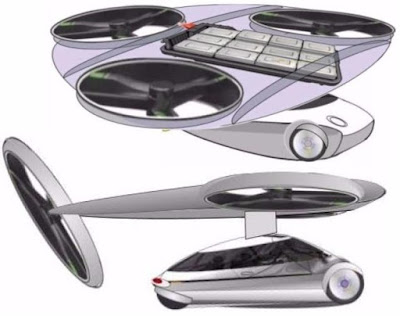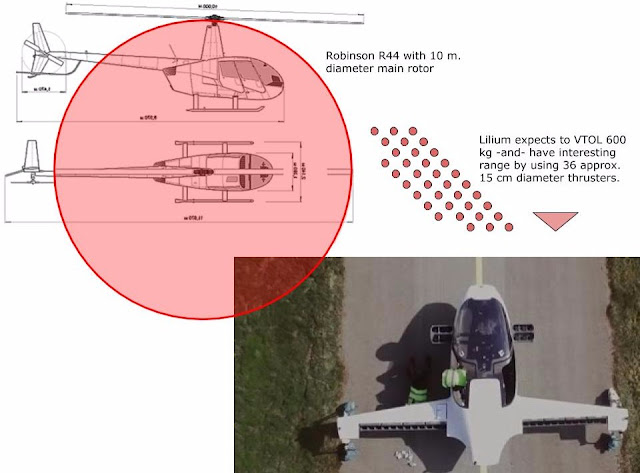I see that Lilium raised $90M in another round of funding
Lilium raises $90M Series B for all-electric flying taxi
They are still claiming a range of 300 km at 300 km/h on the homepage today.
Previously they claimed a top speed of 450 km/h and 500 km range.
London - Paris is also 340 km in a straight line, but nevermind...
The old website (thanks archive.org) showed 600 kg gross weight with a 200 kg payload.
They claim they are using a pack "comprised of several thousand Lithium-Ion cells similar to those in electric cars. It is designed to fully contain a thermal runaway of several cells while still delivering enough power to the propulsion system."
So if I assume a pack level energy density like the best Tesla offers (168 Wh/kg), a 21 kWh usable pack (80% of total capacity used) would weigh 150 kg. This leaves 250 kg for everything else (structure, seats, control system, motors and fans).
There are 36 fans so each would need to produce ~9 kW peak and ~2 kW constant. There are RC Helicopter motors out there that can do this in a little over 1 kg. I assume 2 kg for each motor/fan pod. That's another 72 kg.
The fuselage looks a lot like the old Aptera car, which had a Cd of 0.11 in prototype form. I can see from other sources that for a light aircraft, a Cd of 0.1 is considered good. I've not seen any dimensions for this thing but A=1.5 m^2 seems generous in their favour. It's a 2 seater side-by-side cabin so it it would be tricky to be any narrower.
So just on drag from forward motion alone, I calculate the range at 300 km/h (186 mph) is 82 km (59 miles) near the ground. At 3,000 metres altitude the range is 116 km (72 miles). In order to reach 300 km (186 miles) they would need to fly at ~11,000 metres (
air pressures).
However just from calculating potential energy to lift 600 kg to those heights, assuming 80% efficiency of the ducted fans and 90% motor efficiency, they would need 6.8 kWh to reach 3,000 metres and 25 kWh to reach 11,000 metres.
If we flip the calculation around, to reach 300 km range at 3,000 metres it would need a 54 kWh usable pack, weighing 386 kg.
If we assume a climb rate of 1 km / minute (roughly the same as many helicopters) when using 320 kW, it would expend 16 kWh to reach 3,000 metres or 59 kWh to reach 11,000 metres. Furthermore, the pack would have to sustain 9 C for that period of time.
Thus if we add the battery mass needed to climb and the battery mass needed to cruise 300 km, at 500 kg the battery alone weighs more than the allowed net weight of the vehicle.
And all of the above assumes no margins.
If these guys are sitting on a battery that is 3x better than anyone else, would it not be easier to sell it to car companies rather than go to the trouble of building a whole new class of aircraft around it?






